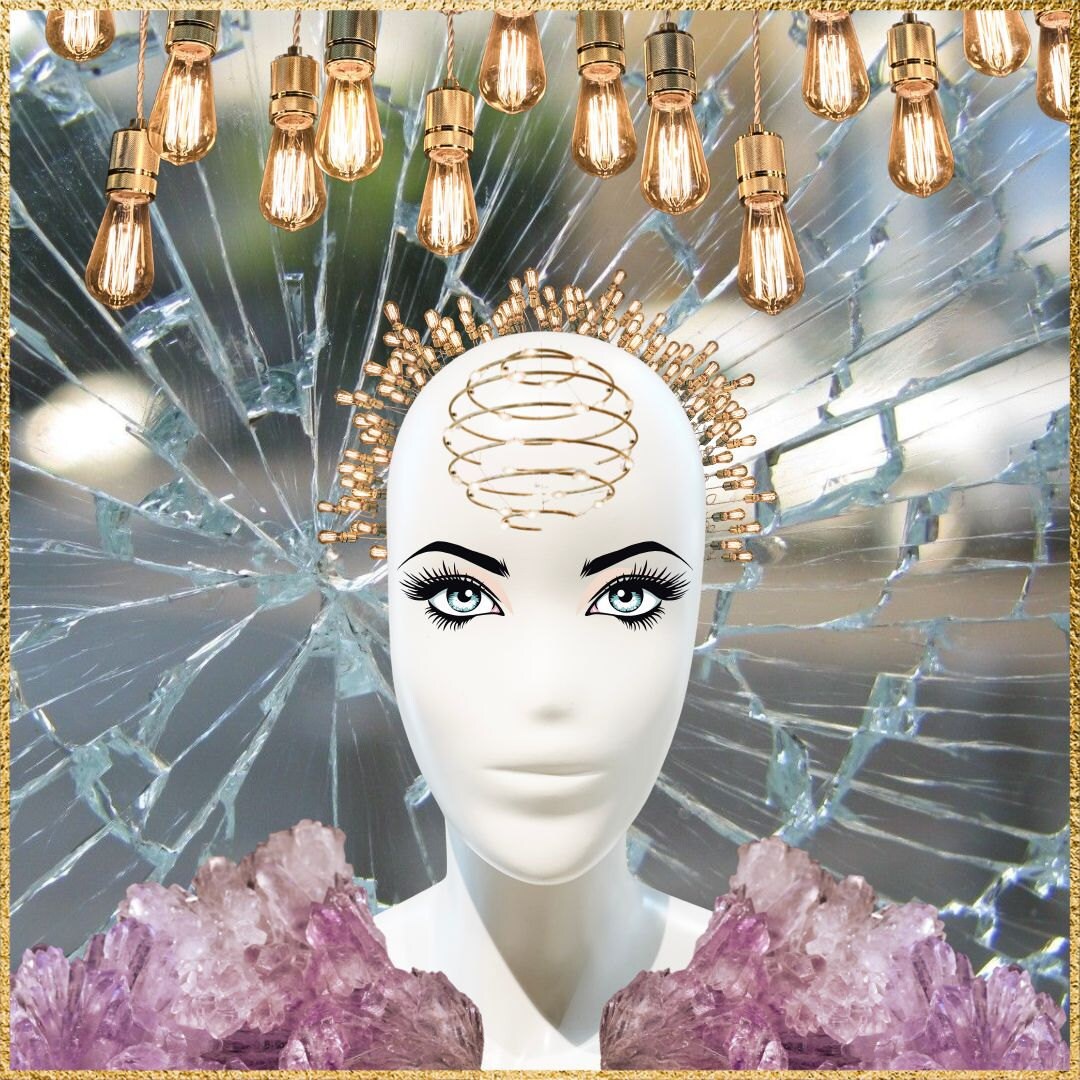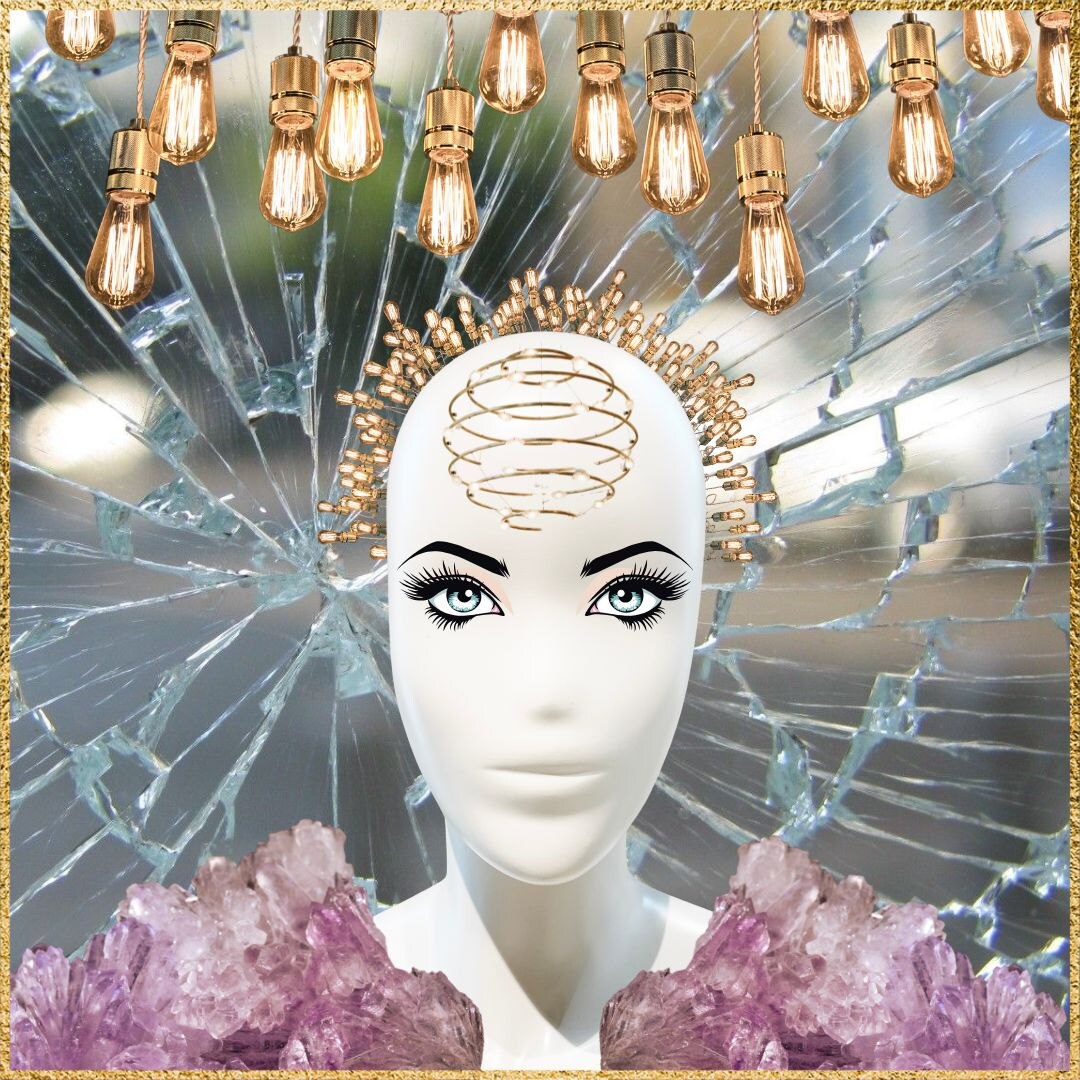
Breaking Through Creative Blocks: Reclaiming Your Creative Power
Let’s face it—as creatives, we push ourselves hard. We chase inspiration relentlessly, striving to get to the center of the idea “Tootsie Pop” with sheer force. But sometimes, that drive leads to burnout, overwhelm, and exhaustion.
As someone with late-diagnosed combined ADHD, I learned this lesson the hard way. I had always followed inspiration into the early hours of the morning, thriving on deep focus and creative flow. But when I went back to school for architecture—a field known for its intense workload and high-pressure environment—burnout hit me like a brick wall.
I entered my program while recovering from Complex PTSD or CPTSD. The combination of CPTSD, ADHD, and the demands of my first year in architecture left me crippled by burnout. It tested my sense of self, my health, and my overall well-being. I had to completely rethink the way I had worked throughout my creative career.
It wasn’t easy to reconcile, but in hindsight, it was a blessing in disguise. I learned invaluable lessons about stress, burnout, creative blocks, and—most importantly—how to give myself grace before reaching the point of total depletion.
If you’ve ever found yourself in this space, you’re not alone. I hope my experience helps you recognize the signs earlier, adapt with more ease, and navigate creative challenges with self-compassion. Let’s explore ways to reignite inspiration—without burning ourselves out in the process.
The Creative Mind: A Force That Shapes the World
Creative minds are the architects of innovation, weaving beauty, meaning, and transformation into the fabric of our world. From art and fashion to technology, architecture, product developmen, and art, problem-solving, creative thinkers push boundaries, challenge norms, and inspire change. Yet, even the most brilliant creative minds experience periods of stagnation—those moments when inspiration feels just out of reach.
If you’ve ever found yourself staring at a blank page, an untouched canvas, or an unsewn pattern, feeling disconnected from your usual spark, know this: You are not alone. Creative blocks are a natural part of the process. But they do not define you. In fact, they often emerge as a signal—a call to slow down, shift perspectives, and rediscover the creative wellspring within you.
Let’s explore why creative blocks happen, how neuroscience explains procrastination and burnout, and, most importantly, how you can compassionately guide yourself back to flow.
The Science Behind Creative Blocks: Understanding Procrastination & Burnout - Especially for ADHD Brains
Why Do We Procrastinate?
Many creatives struggle with procrastination and burnout, but for those of us with ADHD, these challenges can feel even more intense. Traditional advice like “just get started” or “use better time management” often falls flat because ADHD brains function differently when it comes to motivation, executive function, and energy regulation.
Procrastination is often misunderstood as laziness, but neuroscience reveals a deeper story. When facing a creative challenge, the brain’s limbic system (the emotional center) and prefrontal cortex (responsible for rational thinking and planning) engage in a silent battle. The limbic system, driven by fear and discomfort, seeks immediate relief—pushing us toward distractions. The prefrontal cortex, on the other hand, understands the importance of long-term goals. When the limbic system dominates, we procrastinate.
A study published in Psychological Science found that procrastination is not a time management issue but an emotional regulation problem (Pychyl & Sirois, 2013). If a task feels overwhelming, self-doubt creeps in, or the pressure to create is too intense, the brain avoids discomfort by seeking instant gratification—social media scrolling, cleaning, or other unrelated activities.
Solution: Practice self-awareness. When procrastination arises, pause and ask:
• What am I feeling right now?
• Am I afraid of failure or judgment?
• How can I approach this task with curiosity instead of pressure?
By identifying the emotional root of procrastination, you shift from self-criticism to self-compassion, which opens the door to inspired action.
Procrastination for the Neuro Spicy: The ADHD Brain and Task Avoidance
Procrastination isn’t just about poor discipline—it’s a neurobiological response. ADHD affects dopamine regulation, the neurotransmitter responsible for motivation, reward, and focus. Unlike neurotypical individuals, people with ADHD often struggle with task initiation, especially when a task feels:
- Boring or uninteresting (low dopamine = low motivation)
- Overwhelming (paralysis from too many steps)
- High-stakes or perfection-driven (fear of failure = avoidance) Our brains seek instant dopamine boosts, leading us to scroll, snack, clean, or hyperfocus on something else entirely—anything but the task we “should” be doing. This isn’t laziness; it’s neurobiology.
Research Insight: A 2017 study found that ADHD is linked to impaired interoceptive awareness, meaning we struggle to recognize internal cues like stress, exhaustion, or mental overload, which can lead to delayed task initiation and extreme procrastination (Craig, 2017).
Burnout: When Creativity Runs Dry
Burnout is more than exhaustion; it’s a depletion of creative energy, often caused by overworking, perfectionism, or emotional strain. Studies show that prolonged stress floods the brain with cortisol, impairing cognitive flexibility—the ability to think in new, innovative ways (McEwen, 2017).
If you’ve been feeling disconnected from your work, irritable, or uninspired, your brain might be signaling that it needs rest, not more force.
Solution: Honor the need for replenishment. Creativity thrives in spaciousness. Give yourself permission to take breaks, immerse in nature, or engage in activities purely for joy, without expectation.
The ADHD-Burnout Cycle: Why We Crash So Hard
Many creatives with ADHD experience “boom and bust” energy cycles:
- Hyperfocus mode – Extreme bursts of productivity fueled by urgency, passion, or novelty.
- Exhaustion & avoidance – After pushing too hard, the brain crashes, leading to burnout, procrastination, and executive dysfunction.
- Guilt & pressure – As deadlines loom, panic sets in, forcing another unsustainable sprint of hyperfocus.
- Burnout – Over time, this cycle depletes our energy, causes emotional dysregulation, and can lead to ADHD burnout syndrome, a state of complete mental and physical exhaustion (Kooij et al., 2019).
Breaking the Block: Tools & Exercises to Reignite Creativity
1. The 10-Minute Creative Warm-Up
Often, the hardest part is starting. Give yourself permission to create for just 10 minutes without pressure. Whether sketching, writing, or sewing, set a timer and engage without expectation. This tricks the brain into bypassing the fear of failure, easing you into flow.
2. Change Your Environment
Our surroundings shape our thinking. If you’re stuck, shift your setting—work outdoors, visit a museum, rearrange your studio. Novelty sparks neural connections, helping break rigid thought patterns (Baumeister & Masicampo, 2011).
3. The “What If?” Game
Ask yourself playful, open-ended questions:
• What if I tried the opposite of my usual approach?
• What if I combined two unrelated ideas?
• What if failure didn’t exist—what would I create?
Curiosity dissolves fear and opens doors to fresh perspectives.
4. Mindfulness & The Creative Reset
A 5-minute mindfulness practice can reset the brain. Close your eyes, take deep breaths, and observe thoughts without attachment. Research from Harvard shows mindfulness enhances creativity by improving focus and reducing mental clutter (Dane, 2011).
Try this:
• Inhale for four counts, hold for four, exhale for four. Repeat.
• Notice sensations, sounds, and thoughts without judgment.
This grounds you in the present, where creativity flourishes.
5. Reconnect with Your “Why”
Why do you create? What drew you to your craft? Journaling about your creative purpose rekindles passion, shifting focus from external pressure to inner fulfillment.
Prompt: Describe a moment when creativity made you feel truly alive.
How to Break the Cycle: ADHD-Friendly Tools & Mindset Shifts
1. Dopamine-Friendly Task Structuring
• Use body doubling (working alongside someone, even virtually, to stay engaged)
• Time block in short bursts (10-20 minutes, then reward yourself)
• Make tasks engaging (add music, gamify, use colorful visuals)
2. Rethink Procrastination as a Signal, Not a Flaw
• If you’re avoiding a task, ask yourself why: Is it boring? Too big? Too vague?
• Adjust by breaking it into micro-steps or changing the format (e.g., voice notes instead of writing).
3. Work With Your Brain, Not Against It
• Embrace creative cycles instead of forcing constant output.
• Build intentional rest into your workflow to avoid the crash.
• Practice self-compassion—you’re not broken, you just function differently.
What’s your biggest struggle with procrastination or burnout? Have you found any ADHD-friendly tools that help? Share in the comments!
The Role of Self-Love in Creative Flow
Creativity is deeply personal. It requires vulnerability. When we judge ourselves harshly, we block the very essence of our creative expression.
During creative droughts, practice self-love:
• Speak to yourself as you would a dear friend.
• Acknowledge that all creatives face blocks—it’s part of the journey.
• Celebrate effort, not just outcomes.
Remember, your worth is not measured by productivity. You are inherently valuable—whether you create today or not.
You Are Not Alone: A Message of Solidarity
Burnout, procrastination, and creative blocks can feel isolating, but know this: You belong to a vast, unbreakable lineage of artists, designers, thinkers, and makers who have faced these same struggles and emerged stronger.
You don’t have to go through it alone. If you’re struggling to break the cycle, I invite you to book a free coaching discovery call with me. Together, we’ll explore personalized strategies to help you overcome creative blocks, manage burnout, and work with your brain—not against it.
The world needs your vision, your voice, your unique way of seeing. Your creativity is a gift—to yourself and to the world. Be patient with yourself. The spark will return, often when you least expect it.
Schedule your free 50 minute Discovery session here: https://paperbell.me/vichelle-mixon-1
Let’s create a sustainable, fulfilling path forward—on your terms.
Now, I’d love to hear from you:
• What’s your go-to strategy for overcoming creative blocks?
• How do you practice self-compassion during uninspired moments?
Let’s create a space of encouragement in the comments below. Share your thoughts, struggles, and victories—you never know who might need to hear them.
With kindness and creative solidarity,
Vichelle
Further Reading & Resources
Pychyl, Timothy A., and Fuschia M. Sirois. “Procrastination and the Priority of Short-Term Mood Regulation: Consequences for Future Self.” Psychological Science, vol. 24, no. 10, 2013, pp. 2199–2203. https://journals.sagepub.com/doi/10.1177/0956797613485600
McEwen, Bruce S. “Neurobiological and Systemic Effects of Chronic Stress.” Chronic Stress, vol. 1, 2017, p. 2470547017692328. https://journals.sagepub.com/doi/10.1177/2470547017692328
Baumeister, Roy F., and E.J. Masicampo. “Conscious Thought and Goal Pursuit.” Perspectives on Psychological Science, vol. 6, no. 5, 2011, pp. 441–455. https://journals.sagepub.com/doi/10.1177/1745691611419827
Dane, Erik. “Paying Attention to Mindfulness and Its Effects on Task Performance in the Workplace.” Journal of Management, vol. 37, no. 4, 2011, pp. 997–1018. https://journals.sagepub.com/doi/10.1177/0149206310367948
Craig, A. D. “Interoception and Emotion: A Neuroanatomical Perspective.” Nature Reviews Neuroscience, vol. 10, no. 1, 2017, pp. 59–70. https://www.nature.com/articles/nrn2555
Kooij, J. S., et al. “Burnout and Adult ADHD: A Hidden Association.” European Psychiatry, vol. 55, 2019, pp. 25–32. https://www.cambridge.org/core/journals/european-psychiatry/article/burnout-and-adult-adhd-a-hidden-association
Pychyl, Timothy A., and Fuschia M. Sirois. “Procrastination and the Priority of Short-Term Mood Regulation.” Psychological Science, 2013. https://journals.sagepub.com/doi/10.1177/0956797613485600
